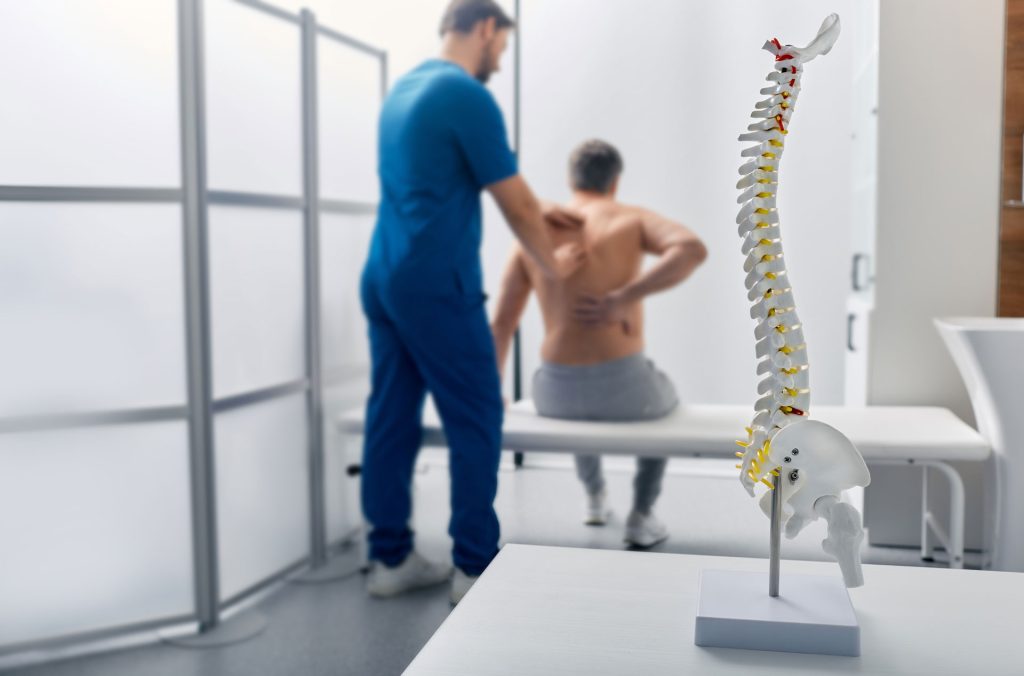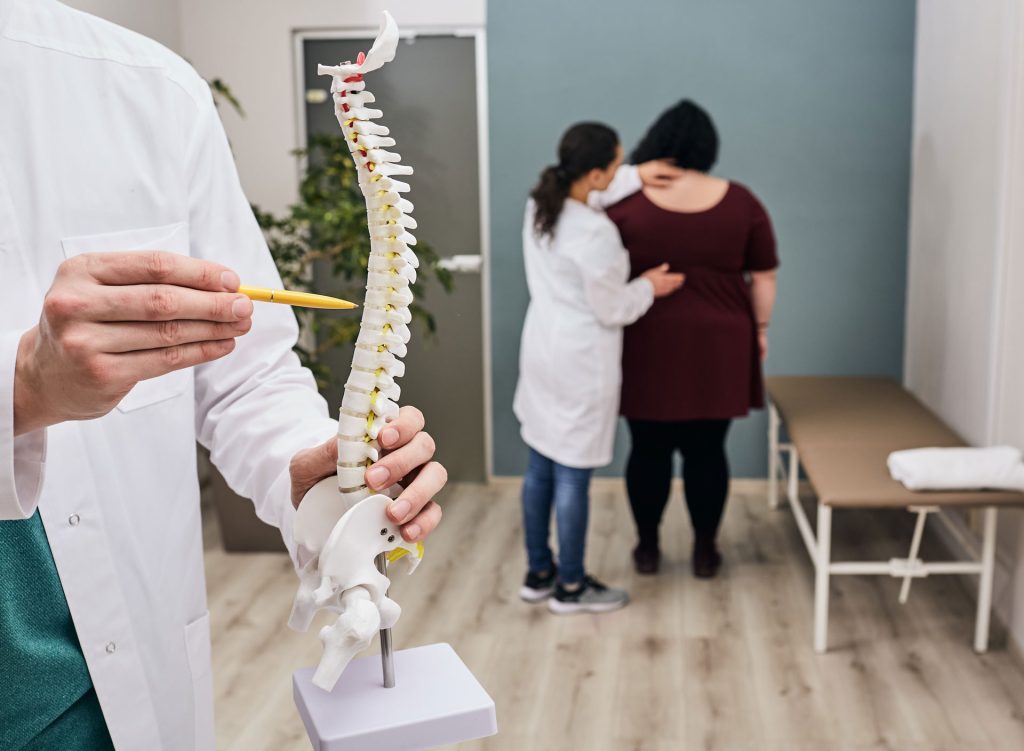Dealing with back pain or a herniated disc can significantly impact your quality of life, making everyday tasks uncomfortable or even unbearable. One treatment option that’s often discussed but not always fully understood is spinal traction.
Whether you’re exploring alternatives to surgery or just trying to understand your options, spinal traction can offer promising relief from pressure on the spine and associated nerve pain. In this article, we’ll explore how spinal traction works, its benefits, and how it may help manage herniated discs and chronic pain conditions effectively.
What Is Spinal Traction and How Does It Work?
Spinal traction is a therapeutic technique used to relieve pressure on the spine by gently stretching it. This method aims to separate the vertebrae and create more space between the spinal discs, which can reduce pressure on compressed nerves, improve alignment, and allow for better disc hydration. For individuals suffering from herniated discs, spinal traction can provide significant relief by decreasing inflammation and promoting the reabsorption of the disc material.
There are various methods of applying traction, but the core principle is the same: decompression. By elongating the spine, traction reduces the effects of gravity and tightness that contribute to nerve compression. This can be especially beneficial for the lumbar (lower back) or cervical (neck) regions, where herniated discs most commonly occur.
Traction is typically performed by a physical therapist or medical professional using specialized equipment, although home devices are also available. It’s not a cure for all spinal conditions, but when used properly, spinal traction can be a key part of a broader, non-surgical treatment plan for managing pain and improving mobility.
Related: Shockwave Therapy for Sports Injuries and Faster Recovery
Types of Spinal Traction: Mechanical vs. Manual

There are two primary types of spinal traction: mechanical and manual. Understanding the difference between them helps patients determine which method may suit their needs best.
Manual spinal traction involves a physical therapist using their hands to stretch and mobilize the spine. This approach is highly personalized, allowing the therapist to adjust the force, angle, and duration based on real-time feedback from the patient. Manual traction is typically used in clinical settings and is ideal for targeting specific vertebral segments or working with sensitive areas.
Mechanical spinal traction, on the other hand, uses devices or machines that apply a controlled, consistent force to stretch the spine. These machines can be programmed to target specific regions and maintain the desired pressure throughout the session. Mechanical traction is especially useful for longer treatments or when precise and repeatable decompression is needed.
Both types of traction can be effective, but mechanical traction is often favored for consistent delivery and the ability to measure results over time. Manual traction, however, allows for greater flexibility and responsiveness. The choice between the two often depends on the individual’s condition, tolerance, and the recommendation of a healthcare provider.
Related: SoftWave Therapy: A Game-Changer for Chronic Pain Sufferers
Benefits of Spinal Traction for Herniated Discs
Spinal traction offers several benefits for individuals dealing with herniated discs, especially when combined with other non-invasive treatments. One of the primary advantages is pain relief. By creating space between vertebrae, traction can reduce pressure on nerves that are being compressed by bulging disc material. This can significantly alleviate symptoms like sharp pain, numbness, or tingling in the limbs.
Another benefit is improved mobility. When disc pressure is reduced, many patients report increased range of motion and greater ease in performing daily activities. Spinal traction may also contribute to faster healing by promoting better circulation to the affected area and allowing disc material to return to its normal position.
Additionally, spinal traction is a drug-free treatment option, which makes it appealing to those looking to reduce dependence on pain medication. It’s also non-surgical, offering a safer and more conservative approach for individuals who wish to avoid invasive procedures. While not a standalone cure, traction therapy can be a powerful component of a holistic plan for managing herniated disc symptoms.
Related: The Future of Pain Management: SoftWave Therapy Explained
What to Expect During a Spinal Traction Session

For those new to spinal traction, knowing what to expect can ease any anxiety and help you prepare for treatment. A typical session begins with a consultation, where the practitioner reviews your condition and tailors the traction setup to your specific needs. Depending on whether you are receiving lumbar or cervical traction, you’ll be positioned either lying down or seated in a supportive device.
In mechanical traction, a harness or belt may be placed around your torso or head, and the machine will gently apply force to stretch your spine. Sessions typically last between 15 and 30 minutes. You may feel a mild stretching or pulling sensation, which is normal and often described as relieving. The therapist monitors your response and adjusts settings to ensure comfort and safety throughout the session.
In manual traction, the therapist uses their hands to apply traction forces in a controlled manner. These sessions may be shorter and are often combined with other physical therapy techniques. After the session, you may feel relaxed or slightly sore, much like after a deep stretch. Most patients require multiple sessions over several weeks to experience noticeable improvement.
Related: SoftWave Therapy for Musculoskeletal Issues: What You Need to Know
Risks and Limitations of Spinal Traction
While spinal traction can offer significant benefits, it’s not suitable for everyone. Understanding the potential risks and limitations is crucial before beginning treatment:
- Not effective for all spinal conditions: People with fractures, infections, osteoporosis, or certain spinal diseases should avoid traction.
- Possible side effects: Some individuals may experience muscle spasms, increased pain, or headaches following a session.
- Temporary relief: In some cases, the effects of traction may not be long-lasting unless combined with other therapies like exercise and posture correction.
- Inconsistent results: Not every patient will respond the same way, and some may require alternative treatments.
- Requires proper guidance: When done incorrectly, especially with home devices, traction can worsen symptoms.
Always consult a qualified healthcare provider to determine if spinal traction is appropriate for your specific condition.
At-Home Spinal Traction Devices: Are They Worth It?
With the rise of at-home therapy tools, many people are considering spinal traction devices they can use on their own. These tools can be effective—but only if used correctly and for the right conditions. Here’s what you should consider:
- Affordability and convenience: Home traction devices are more affordable over time and save trips to a clinic.
- Ease of use: Some are designed to be user-friendly, but they still require proper setup and technique.
- Limited customization: Unlike clinical settings, home devices may not allow for personalized adjustments.
- Potential for misuse: Incorrect use can lead to increased pain or injury.
- Good for maintenance, not diagnosis: They can help maintain progress but shouldn’t replace professional diagnosis and treatment plans.
If you’re thinking about using an at-home traction device, it’s best to first consult with a healthcare provider to ensure it’s safe and appropriate for your condition.
If you’re experiencing back pain or symptoms from a herniated disc, spinal traction may be the solution you’ve been looking for. Dr. Victor Benson and the team at Benson Chiropractic in Muscoda, Wisconsin offer professional spinal traction therapy tailored to your individual needs. Don’t let pain control your life—contact Benson Chiropractic today to schedule your consultation and take the first step toward relief.

